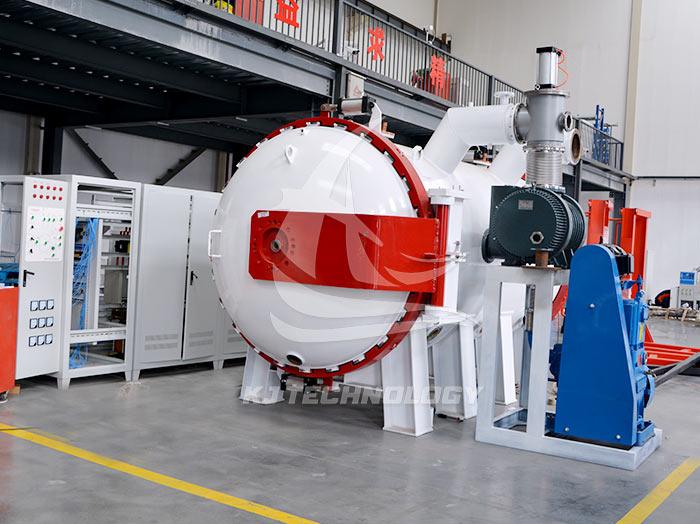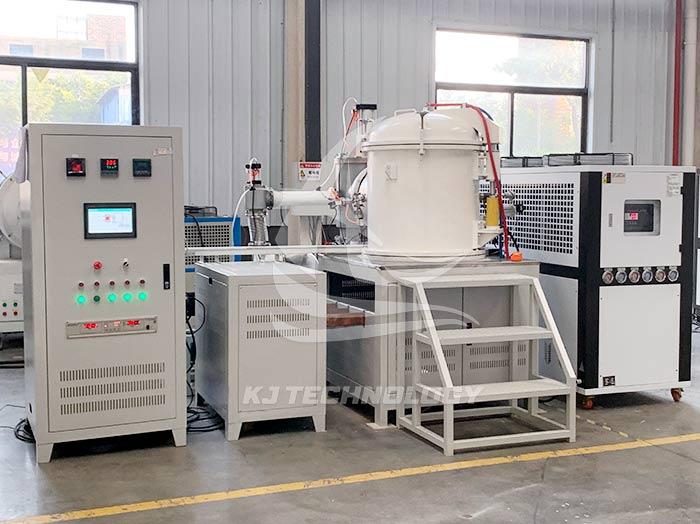Maximum temperature of laboratory graphite vacuum furnace
 10-23-2025 Author: KJ technology
10-23-2025 Author: KJ technology
The maximum temperature of laboratory graphite vacuum furnaces varies depending on the model, purpose, and design. The maximum temperature range of mainstream equipment is between 1600 ℃ and 2300 ℃, which needs to be determined based on equipment configuration and application scenarios. The following is a detailed summary of the maximum temperature of the laboratory graphite vacuum furnace:
1. Maximum temperature range of mainstream equipment
Basic equipment:
The maximum temperature of some laboratory graphite vacuum furnaces can reach 1600 ℃, which is suitable for conventional high-temperature processes such as metal sintering and ceramic heat treatment. This type of equipment usually adopts graphite heating core design, supports vacuum or protective atmosphere environment, and the ultimate vacuum degree can be as low as 6.67 × 10-3Pa.
Mid to high end equipment:
The heating temperature of most laboratory graphite vacuum furnaces is between 1600 ℃ and 2000 ℃, which can meet the needs of most vacuum sintering and vacuum brazing processes. For example, the rated temperature of Kejia furnace horizontal vacuum furnace graphite laboratory furnace is 2000 ℃, and the maximum temperature of the furnace can also reach 2000 ℃.
High end customized equipment:
The maximum temperature of some high-end laboratory graphite vacuum furnaces can exceed 2000 ℃, and even reach 2300 ℃. This type of equipment usually uses specially designed insulation layers and graphite heating elements.
2. Key factors affecting the highest temperature
Heating element material:
The high temperature resistance and stability of graphite heating elements directly determine the maximum heating temperature of the vacuum furnace. High quality graphite materials can withstand higher temperatures, reducing evaporation and loss.
Insulation layer design:
The thickness and material of the insulation layer are crucial for maintaining high temperatures inside the furnace. The specially designed insulation layer can effectively reduce heat loss, improve energy efficiency and temperature uniformity.
Control system accuracy:
The advanced control system can accurately control the heating temperature and vacuum degree, ensuring the stability and reliability of the process. A high-precision temperature control system can reduce temperature fluctuations and improve experimental reproducibility.
Equipment scale and power:
Large or high-power devices typically have higher heating capabilities and can support experimental needs at higher temperatures. However, it should be noted that the increase in equipment scale and power will also increase costs and energy consumption.
3. Temperature selection in different application scenarios
Metal sintering and ceramic heat treatment:
This type of application typically requires a high temperature environment of 1600 ℃ to 2000 ℃ to promote diffusion and bonding between materials, and improve product density and strength.
Melting and heat treatment of high-temperature alloys:
Some special processes (such as high-temperature alloy melting) may require temperatures exceeding 2000 ℃, and high-end customized equipment should be selected in this case.
Semiconductor and New Materials Research and Development:
Applications such as semiconductor crystal growth and silicon carbide material processing require extremely high temperature uniformity and control accuracy, typically requiring precise temperature control within the range of 1600 ℃ to 2000 ℃.








